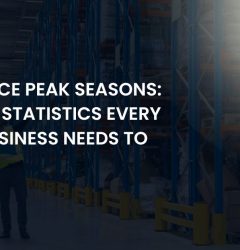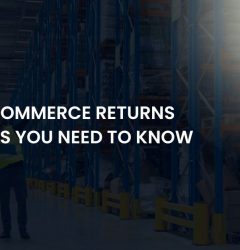06 May
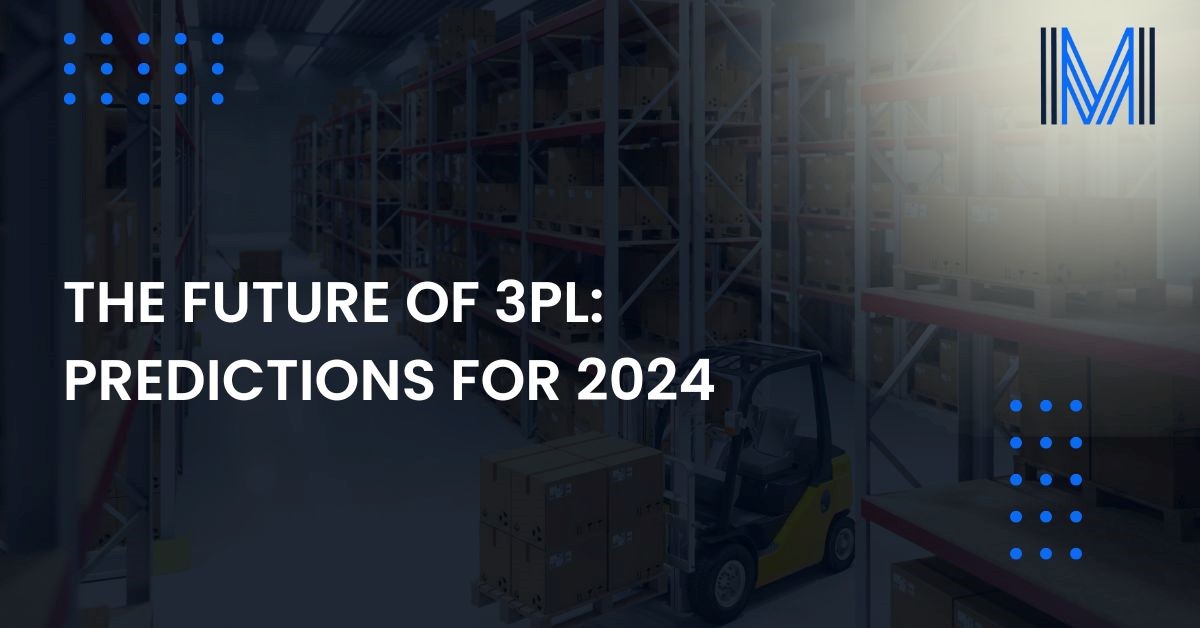
The logistics industry is constantly evolving to keep up with consumer behaviour and innovative technology. In addition, various social, political, and economic upheavals have negatively impacted supply chains worldwide.
To keep up with the changing global landscape and consumer demand for speed and efficiency, 3PLs must adopt a strategic approach for the upcoming year. In 2024, logistic operation managers must stay ahead of the curve and work with businesses to improve supply chain issues in the fast approaching 2024.
Not sure how to create the right plan for your 3PL in the upcoming year? Here are 6 predictions to help you create a great logistics strategy for 2024.
Where 3PLs Stand Right Now
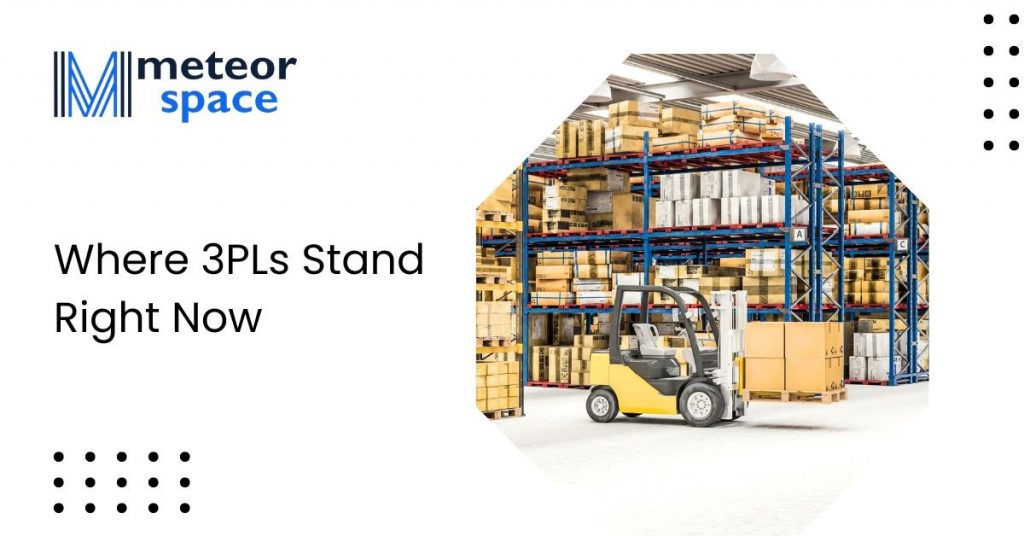
In the age of constant change and evolving customer expectations, the world of logistics has become increasingly complex and demanding. Third-party logistics (3PL) plays a vital role within this fast-paced realm, helping companies streamline supply chains and avoid operational challenges.
With the rise of online shopping and eCommerce stores, logistics providers have adopted new technology, strategic approaches and cutting-edge practices to stay ahead of the competition. Despite these evolving practices, disruptive forces have negatively impacted the supply chain worldwide.
Since 2020, logistics facilities worldwide have faced delays, disruptions, and other adverse problems due to economic downturns and socio-political conflicts. The onset of the COVID-19 pandemic further impacted global networks and slowed down progress in the industry.
In 2021, there were over 11,000 supply chain disruptions worldwide, a sharp increase from 3,700 disruptions in 2019. This year, 3PLs have implemented several targeted strategies to rebuild their operations and fortify them for future issues.
Another critical component affecting the current 3PL landscape is the need for a sustainable operation. Many logistic warehouses have adopted green techniques and operations this year to move their operation in an environmentally friendly direction and meet customer expectations.
Challenges Facing 3PLs in 2023
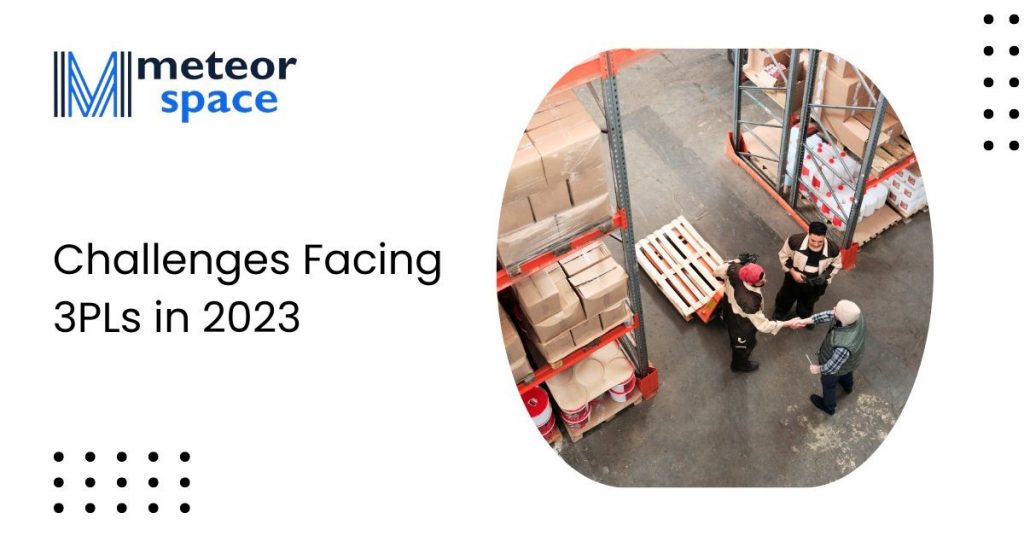
To understand and forecast how 3PLs will behave in the upcoming year, we must take a closer look at the challenges facing the logistics sphere. This will help you create effective strategies in the forthcoming year.
Apart from disruptions in supply chains, there are some key challenges that 3PLs should deal with in the upcoming year.
Lack Of Agility
One of the main reasons why 3PLs fail is the lack of flexibility and adaptability. Every business has varying logistics, storage and distribution needs, so your omnichannel fulfilment strategy must consider these factors.
You must integrate logistics, inventory and distribution with real-time visibility to make the supply chain more efficient. Without this system, you will get inaccurate data, lack visibility, and conflicts with sales channels.
These challenges will reduce the optimisation of your operation and ultimately dissatisfy customers. Creating effective strategies that promote omnichannel services and using the right technology to eliminate challenges is necessary.
High Operational Costs
Economic crises have increased operational costs for 3PLs. Rising inflation, transportation expenses and fluctuating fuel prices have severely strained budgets for logistic facilities. Often, cutting back on such expenses also negatively impacts work quality. To avoid this from happening, businesses have been trying to maintain a balance in their expenditure carefully.
Labour Shortages
In the past year, several key positions in the logistics industry have experienced labour shortages. These include warehouse employees, drivers and trained technicians. Other issues affecting labour shortages are the requirement for specialised training and an ageing workforce.
In an economy with multiple disruptions, finding, training and retaining workers is one of the biggest issues for 3PL. Competition from multinational logistics companies like Amazon also affects smaller 3PLs by keeping them from finding work.
With these challenges in mind, let’s look at the current forecast on how the 3PL industry will behave in the upcoming years.
6 Predictions for 3PLs in 2024
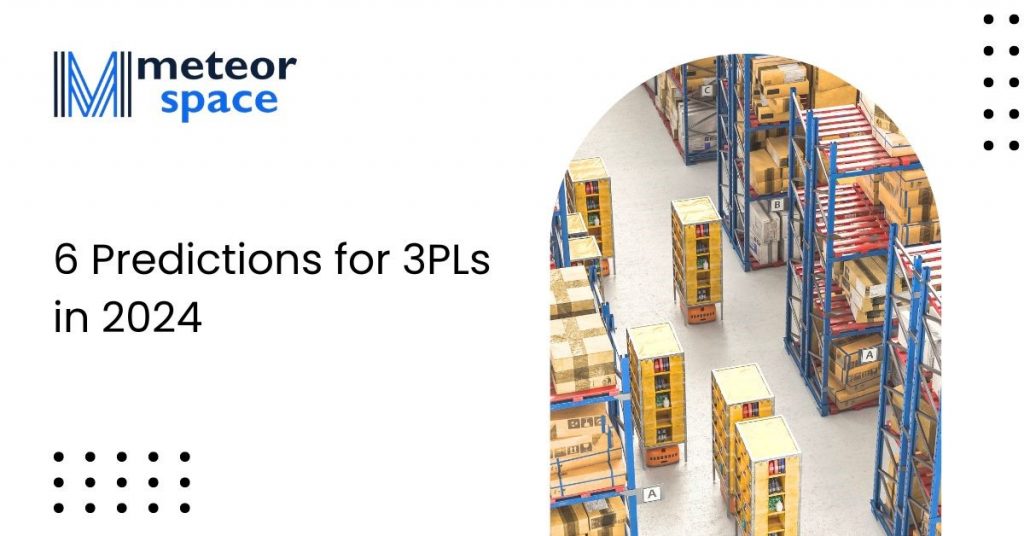
These recent years have been challenging for the 3PL industry, but they have come with several lessons that can be improved with the right strategies. Here’s how 3PLs can innovate to solve issues and maintain efficiency in the upcoming year.
1. Adopting A Flexible Supply Chain
3PLs should focus on building a more resilient supply chain in 2024. In recent years, world conflicts and the pandemic have harmed the global supply chain, leading to delays and disruptions everywhere. These issues highlighted the weakness in logistics worldwide and became a lesson for operation managers to increase warehouse agility.
To combat these issues, logistics companies overhauled their operations to become more flexible. This agility is also great for meeting the ever-changing demands for goods and services.
Flexibility will allow businesses to quickly respond to fluctuations in their supply chain while reducing extra costs and maintaining efficiency. Additionally, flexible operation gives logistic companies an edge over their competitors.
Public opinions on goods are constantly changing, so your supply chain should be adept at handling any such fluctuations. Identifying and responding to these fluctuations is a key component of supply chain flexibility. You must have an in-depth knowledge of the market, customers and technological trends to carry this out efficiently.
A company should be able to make quick decisions based on customer preferences and quick trends. With supply chain flexibility, companies can manage their stocks better, increase their profits and minimise costs.
Logistics companies should adopt collaborative and agile strategies for their operations to achieve better flexibility. Another way to maintain supply chain agility and minimise delays is by conducting a risk management approach. Create backup plans and other methods to be well-prepared for unexpected disruptions.
2. Leveraging Emerging Technologies
Innovative technology has been an excellent asset for 3PLs to grow their operations and maintain efficiency. In the upcoming year, 3PLs will leverage emerging technologies to elevate their supply chain and maintain communication with multiple sales channels.
The Internet of Things (IoT) and blockchain are expected to become a significant part of 3PL operations. These tools are crucial for providing traceability and transparency in logistics. Sensors and scannable tage provide real-time data on the location and conditions of products in transit.
3PLs can pair such devices with the warehouse management system to keep ETAs accurate and updated. This data will make solving delays or other issues more convenient.
By integrating IoT devices, 3PLs can provide accurate information to manufacturers and customers and keep everyone happy. Some of the emerging IoT technology is an excellent option for maintaining the quality of goods. These tools have evolved to monitor temperature and humidity, making them an ideal addition for 3PLs dealing with perishable items.
3. Warehouse Automation
In the same vein as using emerging technologies, 3PLs are also becoming more automated to increase efficiency. Automation is quickly becoming an integral part of various sectors, including logistics.
Warehouse automation is an excellent way of making the operation more efficient and cutting down manual labour. For 3PLs experiencing labour shortages or an ageing workforce, automation is a great solution to this problem.
The primary purpose of this trend is to find the best ways of conducting operations without little to no issues. With this method, there’s also an overall reduction in human errors and delays in the supply chain. Automation allows your in-house team to find ways to optimise the workflow with technology.
Another great benefit of automation is that it reduces health and safety risks for workers. Manual moving and lifting of heavy goods can pose a significant hazard and problem for many warehouse operation managers.
To eliminate this risk and maintain efficiency, logistic spaces use a semi-automated method for lifting, allowing operators to move items of various weights and sizes. Automation provides speed and precision while significantly reducing the risk of injuries.
With an automated picking process, there’s also little chance of heavy objects being damaged during their transport. Machine-operated picking uses careful parameters to lift items, reducing any breakages.
Additionally, automation provides real-time tracking and visibility; it improves safety conditions in the workplace and the overall working conditions for staff members. Some common ways to automate a warehouse include:
- Robot Picking Arms: Pick and place robotics lift objects carefully and put them in the desired area. These picking arms move fast, helping 3PLs optimise their supply chain.
- Automated Conveyor Systems: Conveyor belts move items through large warehouses in record time. They can be customised with gripper systems and in feeds to handle high order volume.
- Automated Guided Vehicles: AGVs are computer-controlled vehicles that don’t require a driver. They use sensors and innovative software to transport materials around the warehouse.
However, it’s crucial to note that while automation has several benefits, it’s not always best to become fully automated. In the upcoming year, logistics companies should adopt a semi-automated approach as the best way to optimise their corporations.
4. Asset-Light Logistics
Many businesses have recently adopted the asset-light model to improve efficiency and build better customer relationships.
Rising warehouse costs, the complex labour market, and expensive fleet management expenses drive more logistics facilities to use an asset-light strategy. This strategy puts the consumer’s needs first and reduces the dependency on physical items for operation.
Eventually, an asset-light model will reduce operating costs and the financial strain on 3PLs. In an era where supply chains need to be more agile, asset-light logistics can increase resiliency. More businesses will begin partnering with 3PLs to meet changing market demands and avoid getting weighed down by fixed assets.
5. Sustainable Fulfilment
With rising awareness of environmental issues, many consumers are demanding greener shipping methods. In 2023, logistic companies adopted several strategies to reduce waste and maintain a sustainable operation.
With 3PLs heading towards a more sustainable route, we should expect green fulfilment to become an integral part of logistics in the future. Green logistics are comprised of several strategies that encourage companies to minimise their pollution and, at the same time, increase operational efficiency.
The main goal of green logistics is to conserve resources, reduce gas emissions, and apply waste management policies in logistics warehouses. All these policies should be implemented alongside quality customer care to maintain their satisfaction.
This year, businesses have access to various tools to apply green policies to their businesses. With renewable energy becoming more accessible, logistic companies used such sources to power their warehouse and delivery fleets.
As mentioned, green logistics are also crucial for waste management. With the amount of packing materials used, the logistics industry produces a lot of waste. Green warehouses have implemented several strategies to reduce waste and maintain a cleaner, more sustainable operation.
Transportation is another area where 3PLs have used green initiatives. One way they did so was by optimising delivery routes. To create a sustainable transport strategy, consider the weather conditions, traffic patterns and item amount and weight.
Another meaningful way 3PLs made green changes was by using electric and alternative fuel transportation. The delivery and transportation industry significantly contributes to greenhouse gas emissions. The environmental impact of such vehicles is greatly reduced through alternative fuels such as electric, biodiesel, and hydrogen vehicles.
Additionally, several logistics companies have also adopted energy-saving facilities through trash reduction initiatives, sustainable packaging, and recycling. With these methods, we expect green fulfilment to become a mainstay in the future.
6. Cloud Computing
Cloud computing was integral to logistics facilities this year and will remain a crucial component of logistics operations. This technology has been extremely beneficial for various industries, including the logistics businesses.
With cloud computing, companies can manage scalability and reduce operational costs. Cloud computing allows operation managers to handle their work from anywhere, making problem-solving easier. Since everything is based on the cloud, information is easily accessible from any connected device.
Another great thing about cloud computing is that data isn’t stored in one place, so there’s better security and less hardware dependence. This also makes it easy to maintain hardware long-term.
Clear communication and open collaboration are essential for a logistics facility to operate smoothly. Cloud-based technology makes it easy to share information, collaborate on ideas, and conduct communication between suppliers and customers, regardless of their location.
Cloud computing also allows more flexibility to keep up with new technological advancements. In the upcoming years, there’s no doubt that logistics facilities will have access to even more innovative tools. Cloud computing will make this transition easier as it’s not tied to ageing hardware.
The Bottomline
In 2023, 3PLs underwent a significant transformation to make up for the defects of the past years. In 2024, logistic companies will implement these changes to improve efficiency and accuracy.
With rapid innovation, tech-based tools will become an integral part of 3PLs and how they conduct their operations. Sustainable practices will also become core to the logistics industry, especially if they want to thrive in an ever-changing global landscape.
With innovation, a customer-based approach and efficiency, the 3PL ecosystem is poised for a significant renewal in the upcoming year.
Choose Meteor Space As Your 3PL Partner In 2024

If you want a quality 3PL service that provides excellent order fulfilment services with innovative tech-based tools, choose Meteor Space. We offer many features to help online stores through all packaging and shipping needs.
Meteor’s expert team members use their knowledge to get you through peak sales seasons without losing efficiency. Our technology-based services provide excellent management and organisation programs to help you stay on top of your inventory. You can also access Meteor’s easy-to-use web portal, fast shipping, efficient pick and pack and much more.
Author:
Namrata Chawla
Namrata Chawla, a professional writer, crafts compelling weblog content on warehouse management, inventory control, logistics, and beyond. With a wealth of experience in this niche, she’s dedicated to delivering unique, informative, and top-tier posts. Her commitment to exploration ensures fresh perspectives in each insightful blog post.
UPDATED ON: 06th May 2024

